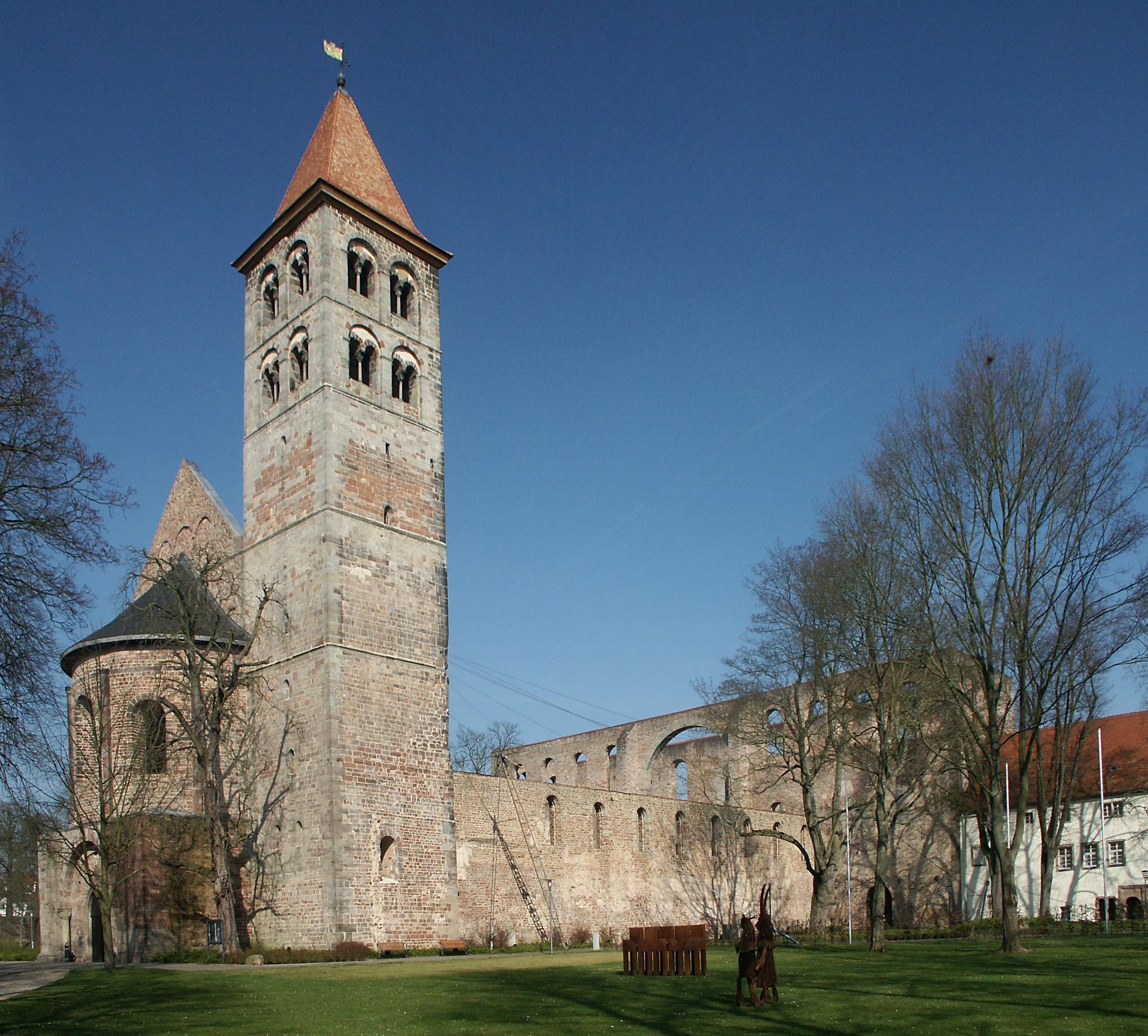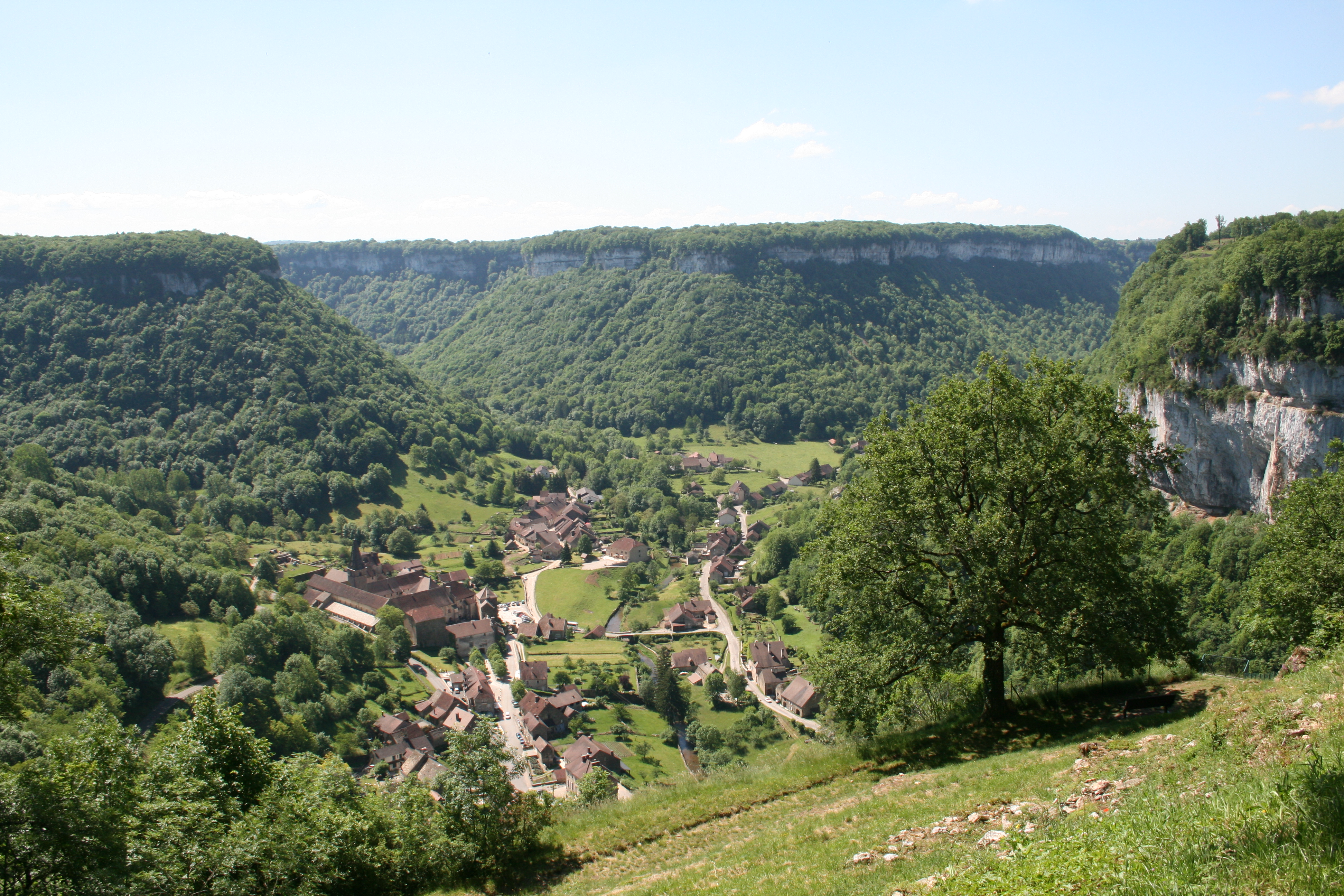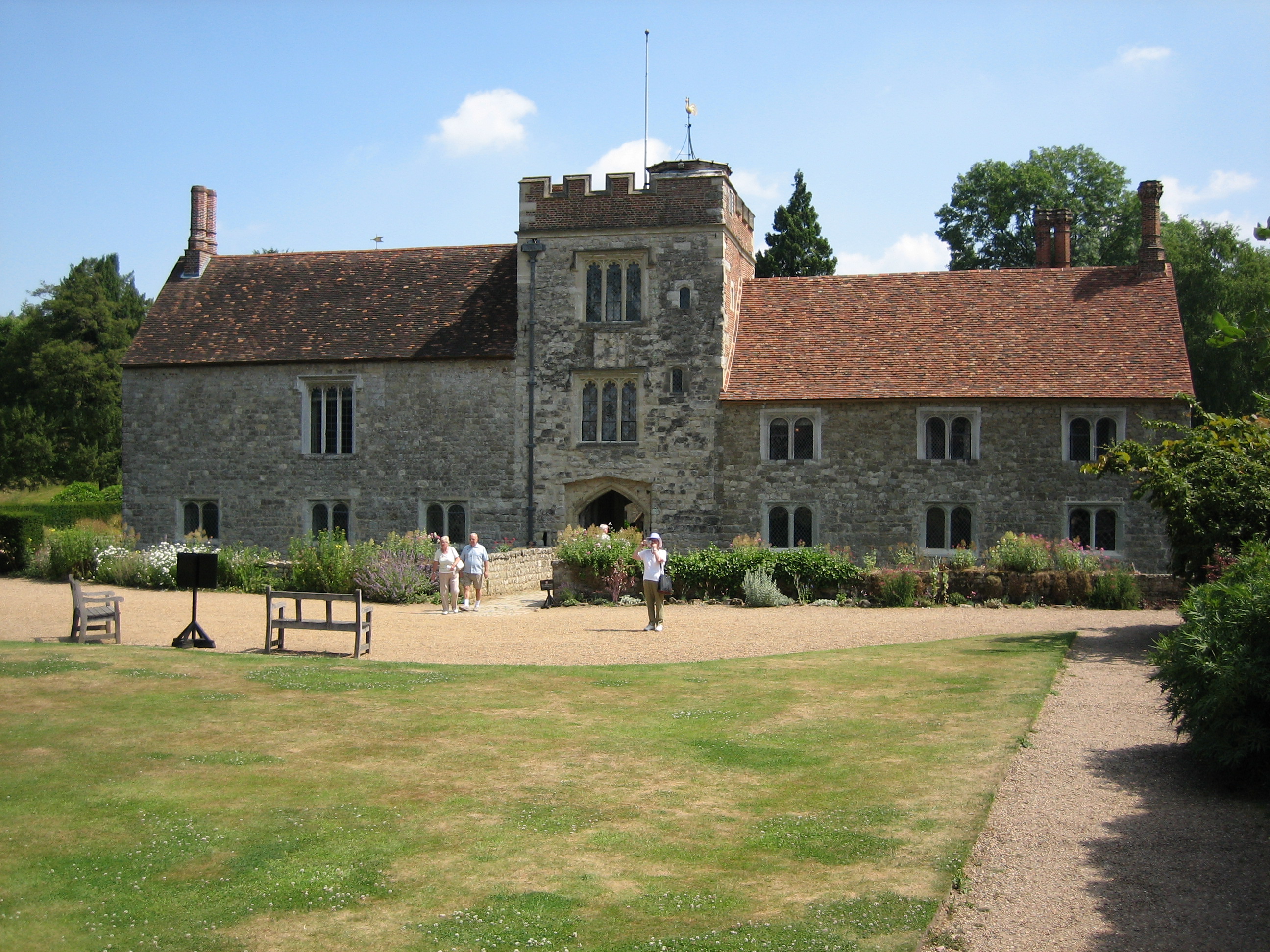|
Cluniac Reforms
The Cluniac Reforms (also called the Benedictine Reform) were a series of changes within medieval Christian monasticism, monasticism in the Western Church focused on restoring the traditional monastic life, encouraging art, and caring for the poor. The movement began within the Benedictine order at Cluny Abbey, founded in 910 by William I, Duke of Aquitaine (875–918). The reforms were largely carried out by Saint Odo (c. 878 – 942) and spread throughout France (Burgundy, Provence, Auvergne (province), Auvergne, Poitou), into Kingdom of England, England (the English Benedictine Reform), and through much of Italy, northern Portugal and Spain. Background In the early 10th century, Western monasticism, which had flourished several centuries earlier with St Benedict of Nursia, was experiencing a severe decline due to unstable political and social conditions resulting from the nearly continuous Viking raids, widespread poverty and, especially, the dependence of abbeys on the local nob ... [...More Info...] [...Related Items...] OR: [Wikipedia] [Google] [Baidu] |
Christian Monasticism
Christian monasticism is a religious way of life of Christians who live Asceticism#Christianity, ascetic and typically cloistered lives that are dedicated to Christian worship. It began to develop early in the history of the Christian Church, modeled upon scriptural examples and ideals, including those in the Old Testament. It has come to be regulated by religious rules (e. g., the Rule of Saint Augustine, Anthony the Great, Pachomius the Great, St Pachomius, the Rule of St Basil, the Rule of St Benedict) and, in modern times, the Canon law of the respective Christian denominations that have forms of monastic living. Those living the monastic life are known by the generic terms monks (men) and nuns (women). The word ''monk'' originated from the Ancient Greek language, Greek (, 'monk'), itself from () meaning 'alone'. Christian monks did not live in monasteries at first; rather, they began by living alone as solitaries, as the word might suggest. As more people took on the li ... [...More Info...] [...Related Items...] OR: [Wikipedia] [Google] [Baidu] |
Benedict Of Nursia
Benedict of Nursia (; ; 2 March 480 – 21 March 547), often known as Saint Benedict, was a Great Church, Christian monk. He is famed in the Catholic Church, the Eastern Orthodox Church, the Lutheran Churches, the Anglican Communion, and Old Catholic Churches. In 1964, Pope Paul VI declared Benedict a Patron saints of Europe , patron saint of Europe. Benedict founded twelve communities for monks at Subiaco, Lazio , Subiaco in present-day Lazio, Italy (about to the east of Rome), before moving southeast to Monte Cassino in the mountains of central Italy. The present-day Order of Saint Benedict emerged later and, moreover, is not an religious order , "order" as the term is commonly understood, but a confederation of autonomous Congregation (group of houses) , congregations. Benedict's main achievement, his ''Rule of Saint Benedict'', contains a set of Decree (canon law), rules for his monks to follow. Heavily influenced by the writings of John Cassian ( – ), it shows st ... [...More Info...] [...Related Items...] OR: [Wikipedia] [Google] [Baidu] |
Peace And Truce Of God
The Peace and Truce of God () was a movement in the Middle Ages led by the Catholic Church and was one of the most influential mass peace movements in history. The goal of both the ''Pax Dei'' and the ''Treuga Dei'' was to limit the violence of feuding in the western half of the former Carolingian Empire – following its collapse in the middle of the 9th century – using the threat of spiritual sanctions. The eastern half of the former Carolingian Empire did not experience the same collapse of central authority, and neither did England. This movement was also marked by popular participation, with many commoners supporting the movement as a solution to the famines, violence, and collapse of the social order around them. The Peace of God was first proclaimed in 989, at the Council of Charroux. It sought to protect ecclesiastical property, agricultural resources and unarmed clerics. The Truce of God, first proclaimed in 1027 at the Council of Toulouges, attempted to limit t ... [...More Info...] [...Related Items...] OR: [Wikipedia] [Google] [Baidu] |
Eastern Orthodox Church
The Eastern Orthodox Church, officially the Orthodox Catholic Church, and also called the Greek Orthodox Church or simply the Orthodox Church, is List of Christian denominations by number of members, one of the three major doctrinal and jurisdictional groups of Christianity, with approximately 230 million baptised members. It operates as a Communion (Christian), communion of autocephalous churches, each governed by its Bishop (Orthodox Church), bishops via local Holy Synod, synods. The church has no central doctrinal or governmental authority analogous to the pope of the Catholic Church. Nevertheless, the Ecumenical Patriarch of Constantinople is recognised by them as ''primus inter pares'' (), a title held by the patriarch of Rome prior to 1054. As one of the oldest surviving religious institutions in the world, the Eastern Orthodox Church has played an especially prominent role in the history and culture of Eastern Europe, Eastern and Southeastern Europe. Since 2018, the ... [...More Info...] [...Related Items...] OR: [Wikipedia] [Google] [Baidu] |
Richard Of Verdun
Richard of Verdun (970–1046) was the abbot of the influential northeastern French Monastery of St. Vanne from 1004 to 1046.Geary, Patrick. '' Furta Sacra: Thefts of Relics in The Central Middle Ages''. Princeton University Press,1990, p. 65 Life Richard was born to a noble family of Bantheville, the son of Walter and Theodrada. As a child, he was enrolled in the cathedral school of Rheims under Archbishop Adalbero and was eventually ordained a priest. It was at Rheims that he first met Frederick, son of Godfrey I, Count of Verdun. Richard entered the monastery of St. Vanne as a young man, and upon his arrival he was shocked and dismayed by the relatively poor state of the monastery. So great were his feelings that he had attempted to be transferred from St. Vanne, but was eventually talked out of it by Odilo of Cluny.Geary 1990, pp. 65-66 Through the influence of Bishop Haimo of Verdun, Richard was elected to succeed Fergenius as abbot of St. Vanne in October 1004. Due to h ... [...More Info...] [...Related Items...] OR: [Wikipedia] [Google] [Baidu] |
Lambert Of Hersfeld
Lambert of Hersfeld (also called Lampert or Lampert of Aschaffenburg; – 1082/85) was a medieval chronicler. His work represents a major source for the history of the German kingdom of Henry IV and the incipient Investiture Controversy in the eleventh century. Life What little is known of his life is revealed in scattered details from his own historical writings. Probably a Franconian by birth, of good family, he prepared for an ecclesiastical career at the cathedral school in Bamberg, where he received tuition by Anno of Steusslingen, the later Archbishop of Cologne. On 15 March 1058 Lambert entered the Benedictine abbey of Hersfeld as a monk. On September 16, he was also ordained as a priest in Aschaffenburg and therefore sometimes called Lampert of Aschaffenburg. After his elevation to the priesthood, he made a pilgrimage to Jerusalem. Back in Hersfeld in October 1059, Lambert worked in the cloister library and taught at the monastery school. In 1071 he visited the Benedi ... [...More Info...] [...Related Items...] OR: [Wikipedia] [Google] [Baidu] |
Pope Urban II
Pope Urban II (; – 29 July 1099), otherwise known as Odo of Châtillon or Otho de Lagery, was the head of the Catholic Church and ruler of the Papal States from 12 March 1088 to his death. He is best known for convening the Council of Clermont, which ignited the series of Christianity and violence, Christian military expeditions known as the Crusades. Pope Urban was a native of France and a descendant of a noble family from the French commune of Châtillon-sur-Marne. Before his papacy, Urban was the grand prior of Cluny Abbey, Cluny and bishop of Ostia. As pope, he dealt with Antipope Clement III, the infighting of various Christian nations, and the Byzantine–Seljuk wars, Turkish invasions into Anatolia. In 1095, he started preaching for the start of the First Crusade (1096–1099). He promised forgiveness and pardon for all of the past sins of those who would fight to reclaim the Holy Land from Muslims and free the Eastern churches. This pardon would also apply to those fig ... [...More Info...] [...Related Items...] OR: [Wikipedia] [Google] [Baidu] |
Baume Abbey
Baume Abbey, in its village of Baume-les-Messieurs, Jura (department), Jura, France, was founded as a Benedictine abbey not far from the still-travelled Roman road linking Besançon and Lyon. It stands near the source of the Dard (river), Dard. Around it the village of Baume-les-Messieurs is congregated. The abbey is known for its sixteenth-century retable. Early history Jean Mabillon followed an early tradition that the abbey had been founded by Saint Columbanus, which would place the foundation in the late sixth century. Bernard Prost says that in 732 Saracen raiders destroyed the obscure community of monks, along with neighboring Château-Châlon and the village of Lons-le-Saunier. It was refounded during the reign of Louis the Pious in the early ninth century by Saint Eutice, probably a disciple of Benedict of Aniane, who was revitalizing and reordering the Benedictine communities of the Gauls. In 817, when Emperor Louis at Aachen divided the monasteries in his lands into th ... [...More Info...] [...Related Items...] OR: [Wikipedia] [Google] [Baidu] |
Berno Of Cluny
Saint Berno of Cluny (French: ''Bernon'') or Berno of Baume (c. 850 – 13 January 927) was the first abbot of Cluny from its foundation in 909 until he died in 927. He began the tradition of the Cluniac reforms which his successors spread across Europe. Berno was first a monk at St. Martin's Abbey, Autun, and then at Baume Abbey about 886. In 890, he founded the monastery of Gigny on his own estates, and others at Bourg-Dieu and Massay. In 910, William I of Aquitaine, founder of Cluny, nominated him abbot of the new foundation. Berno placed the monastery under the Benedictine rule (founded by Benedict of Nursia and reformed by Benedict of Aniane). He resigned as abbot in 925, his abbeys being divided between his relative Vido and his disciple Odo of Cluny. He is regarded as a saint, with his feast day on 13 January. Background St Benedict of Nursia had founded his famous monastery at Monte Cassino in the 5th century, and from it, his ideas and his Rule would come t ... [...More Info...] [...Related Items...] OR: [Wikipedia] [Google] [Baidu] |
Matins
Matins (also Mattins) is a canonical hour in Christian liturgy, originally sung during the darkness of early morning (between midnight and dawn). The earliest use of the term was in reference to the canonical hour, also called the vigil, which was originally celebrated by monks from about two hours after midnight to, at latest, the dawn, the time for the canonical hour of lauds (a practice still followed in certain orders). It was divided into two or (on Sundays) three nocturns. Outside of monasteries, it was generally recited at other times of the day, often in conjunction with lauds. Liturgy In the Liturgy of the Hours of the Roman Catholic Church, Matins is also called “the Office of Readings”, which includes several psalms, a chapter of a book of Scripture (assigned according to the liturgical seasons), and a reading from the works of patristic authors or saints. In the Byzantine Rite, these vigils correspond to the aggregate comprising the Midnight office, orthros, ... [...More Info...] [...Related Items...] OR: [Wikipedia] [Google] [Baidu] |
Rule Of Saint Benedict
The ''Rule of Saint Benedict'' () is a book of precepts written in Latin by St. Benedict of Nursia (c. AD 480–550) for monks living communally under the authority of an abbot. The spirit of Saint Benedict's Rule is summed up in the motto of the Benedictine Confederation: ''pax'' ("peace") and the traditional ''ora et labora'' ("pray and work"). Compared to other precepts, the Rule provides a moderate path between individual zeal and formulaic institutionalism; because of this middle ground, it has been widely popular. Benedict's concerns were his views of the needs of monks in a community environment: namely, to establish due order, to foster an understanding of the relational nature of human beings, and to provide a spiritual father to support and strengthen the individual's ascetic effort and the spiritual growth that is required for the fulfillment of the human vocation, theosis. The ''Rule of Saint Benedict'' has been used by Benedictines for 15 centuries, and thus St. Be ... [...More Info...] [...Related Items...] OR: [Wikipedia] [Google] [Baidu] |
Lord Of The Manor
Lord of the manor is a title that, in Anglo-Saxon England and Norman England, referred to the landholder of a historical rural estate. The titles date to the English Feudalism, feudal (specifically English feudal barony, baronial) system. The lord enjoyed Manorialism, manorial rights (the rights to establish and occupy a residence, known as the manor house and demesne) as well as seignory, the right to grant or draw benefit from the estate (for example, as a landlord). The title is not a peerage or title of upper nobility (although the holder could also be a peer) but was a relationship to land and how it could be used and those living on the land (tenants) may be deployed, and the broad estate and its inhabitants administered. The title continues in modern England and Wales as a legally recognised form of property that can be held independently of its historical rights. It may belong entirely to one person or be a moiety title, moiety shared with other people. The title is know ... [...More Info...] [...Related Items...] OR: [Wikipedia] [Google] [Baidu] |







